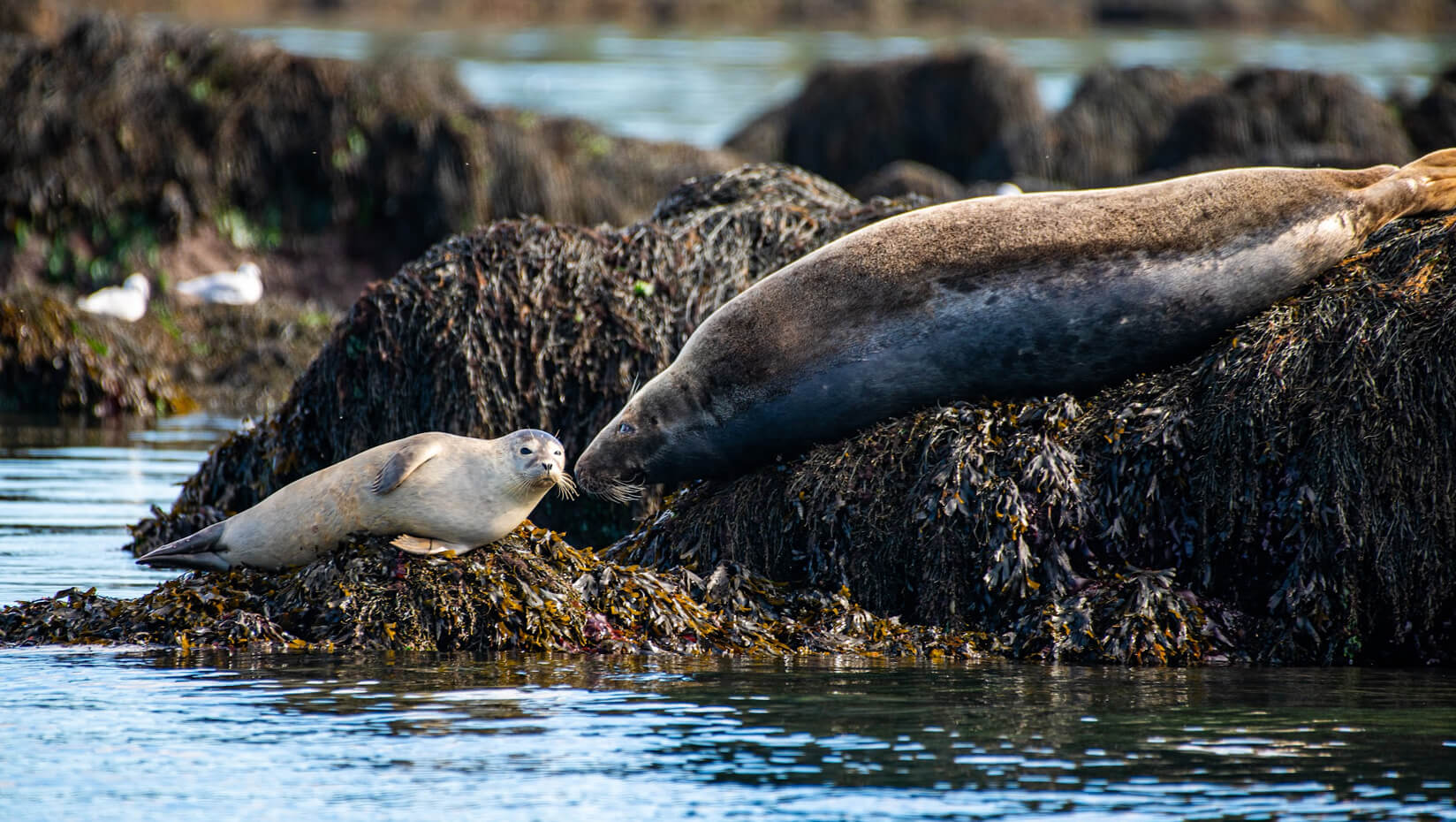
UMaine research about humans harassing seals could inform public outreach
Seals can look irresistibly cute to beachgoers, but harassing the pinnipeds can cause them stress and potentially even lead to their death. By researching when these incidents occur and what they entail — from feeding or touching the seals to shooting them or hitting them with a boat — a group of UMaine researchers and collaborators involved in marine mammal conservation hopes to help better inform policy and public outreach to protect Maine’s seals.
A UMaine-led study published in the journal Conservation Science and Practice looked at the past several decades of reported incidents of seal stranding, when the animal is found on a beach, or in coastal waters dead or in need of assistance. The study included incidents that occurred in Maine between 2007–19 using data from the Maine Department of Marine Resources, Marine Mammals of Maine and Allied Whale at the College of the Atlantic. These organizations represent members of a national network of marine mammal stranding organizations that respond to and collect data from stranded marine mammals.
With input from stranding organizations, the researchers developed detailed classifications for the types of human impacts observed on stranded seals, dividing general categories like “harrassment” into more specific subgroups, including physical contact, displacement from land, feeding and canine interaction.
“Our initial exploration of the data found that the traditional mode of categorizing human interaction cases among stranded marine mammals obscures potentially important trends in Maine, where the majority of cases fall into a single broad category of ‘harassment,’” says Kristina Cammen, a UMaine assistant professor of marine mammal science in the School of Marine Sciences. “By breaking this category down, we offer stranding networks new tools to understand and respond to the threats that are facing our local seal populations.”
The results found that, overall, human harassment of seals in Maine has increased over the period studied. There were more reports of human harassment of seals in areas of southern Maine, where the human population is denser and more tourists pass through during the summer, though the rates of harassment were the same even in less densely populated areas with fewer overall incidents.
Moreover, the study found that there is variation in the rate and type of human interaction, depending on the age of the animal, the season and the specific species. For example, humans were most likely to approach harbor seal pups, while adult gray seals were most likely to show evidence of interaction with fishing gear.
“Many of the stranding reports for animals that were harassed showed that the harassment was done with the best intentions, people believing that the animal required intervention and wanting to help the animal. This research is important because it helps stranding networks better understand where and how to focus their outreach and education so that they may empower the public to actually help these animals rather than harass them,” says Emma Newcomb, the recently graduated UMaine Honors undergraduate student who completed her senior thesis on this topic and co-authored the published study.
The researchers explain that these differences can be attributed to the life history and habits of different seal species. For example, harbor seals give birth to and nurse their pups in coastal Maine during the late spring and early summer during peak tourist season.
Public misinformation also can play a role in seal harassment. Harbor seal mothers commonly leave pups alone on beaches while foraging offshore, and well-meaning people thinking the pup is abandoned and needs help may intervene and disrupt mother-pup bonds, ultimately reducing the baby seal’s chance of survival.
The researchers hope that the results of the study, as well as the more specific classification scheme, will inform public outreach programs aimed at helping seals to better target their messaging to the right issues at the right time.
“Marine mammal stranding organizations can integrate our research findings into the public talks they give and the conversations they have with members of the general public who call their hotline or approach them on the beach. Together with these organizations, we hope to help address the growing rates of human harassment with protected seal species,” says Cammen.
Cammen says that if you come across a stranded marine mammal, you should not approach it. Newcomb says to stay 150 feet away, and if you do come upon an animal unexpectedly, you should talk quietly and move to give it space. Stranded marine mammals in Maine should be reported to the Maine Marine Animal Reporting Hotline at 1.800.532.9551.
“It never hurts to call when you see an animal on a beach, but a seal on a beach does not inherently mean it is unhealthy or needs help. It is important to let the stranding networks decide what animals need intervention and what animals are fine on their own,” says Newcomb.
Contact: Sam Schipani, samantha.schipani@maine.edu
